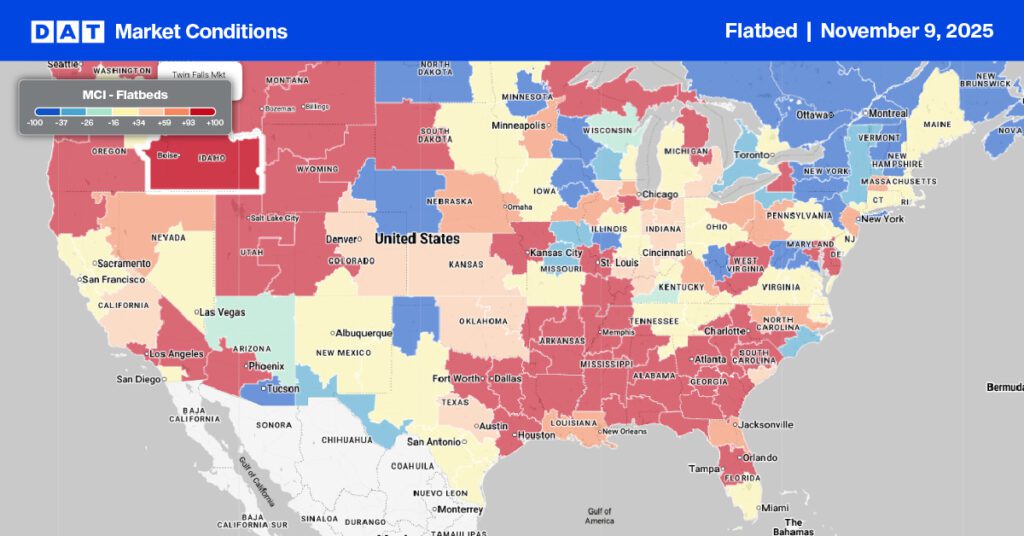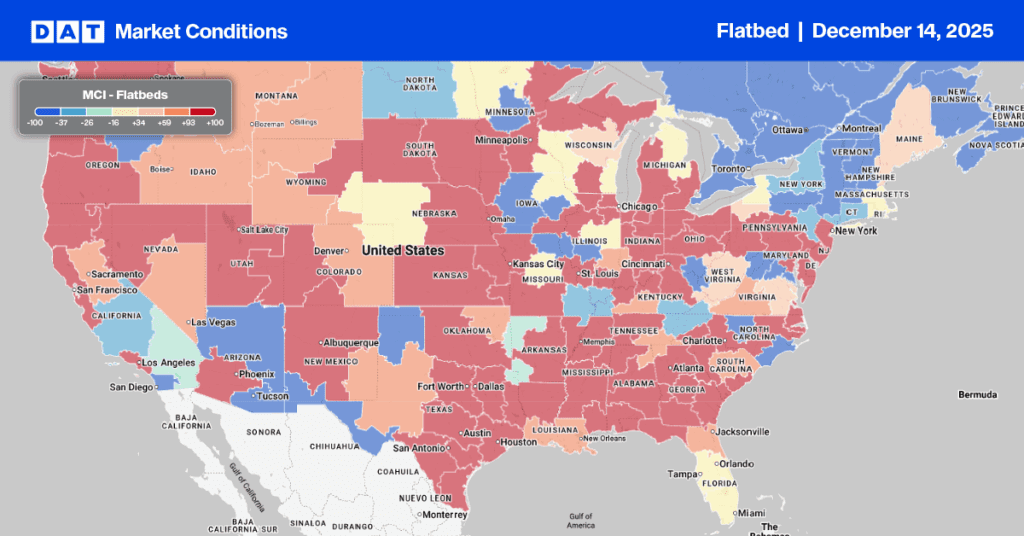Owyhee Produce’s Shay Myers recently stated in a social media post that they opt for flatbed trucks over reefers when shipping onions from their Idaho farm. This is a common practice, with onions frequently observed on flatbeds during transport. Unlike more fragile produce such as leafy greens, spinach, iceberg lettuce, or cabbage, onions can withstand colder temperatures, only freezing below 26 degrees Fahrenheit, which facilitates nationwide shipping. Flatbeds are favored for onions due to the benefits of air circulation.
Get the clearest, most accurate view of the truckload marketplace with data from DAT iQ.
Tune into DAT iQ Live, live on YouTube or LinkedIn, 10am ET every Tuesday.
Shipping leafy greens on a flatbed across the country would result in dry and shriveled produce. However, onions simply develop more skin, which improves quality and customer satisfaction. An additional benefit of flatbed shipping is its cost-effectiveness compared to using a reefer trailer. Flatbed drivers tarp these loads to protect them from rain and sun, and the sides can be dropped for full coverage in colder or adverse weather conditions. From August to November, 40% of Owyhee Produce volume is shipped on flatbeds.

Flatbed Market Conditions
Last week, the flatbed market experienced a seasonal slowdown, particularly in the Top 10 markets, which represent nearly 30% of the national volume. This led to the load-to-truck ratio settling at 21.59. The decrease was primarily due to a 5% drop in load posts and a 3% increase in equipment posts.
Despite a significant 21% decline in the Top 10 markets, some regional areas showed increased tightness. For instance, Portland saw spot rates jump by $0.30 per mile to $2.36 after three weeks of declines. Similarly, Houston experienced a $0.03 per mile increase in rates for outbound flatbed loads, reaching $2.04 per mile. Spot rates in Jackson, MS, surged by $0.30 per mile to $2.85, mainly on the Dallas/Ft. Worth and Nashville regional lanes.
National flatbed spot rates
For the second consecutive week, the 7-day national average flatbed rate remained stable, closing last week at $2.05 per mile. This figure represents an increase of $0.08, or 4%, compared to last year. The spot rate last week also surpassed the 2017 rate by $0.04 per mile and was $0.07 per mile, or 4%, higher than the average for Week 45 over the past decade.



